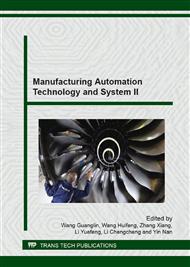p.437
p.443
p.450
p.456
p.462
p.470
p.476
p.482
p.493
Modeling and Control Simulation for the Multi-Range Hydro-Mechanical CVT
Abstract:
To develop the control system of multi-range hydro-mechanical continuously variable transmission (HMCVT), a model of a multi-range HMCVT is built using the principle of dynamics. According to the characteristic of power split, HMCVT is separated as axes set, variable displacement pump-motor system, clutch set. With wheel tractor as application instance, the whole model of vehicle power train is made, which includes the engine, HMCVT, running system and control system. Based on the theory of Finite State Machine, an automatic control method of speed change and range shift is present, which employs the throttle value, engine speed, range number and transmission ratio as the control parameters. The dynamic characteristic of automatic speed changing and ranges shifting is simulated. The result indicates that the model can correctly represent the dynamic characteristic of HMCVT, the engine can run at the optimal working point, the multi-range HMCVT can shift range steadily and change transmission ratio continuously when the load changes, the circularly shift range is avoided. The model can be used conveniently for the analysis of vehicle dynamic performance and the research of multi-range HMCVT control method.
Info:
Periodical:
Pages:
462-469
Citation:
Online since:
August 2014
Authors:
Price:
Сopyright:
© 2014 Trans Tech Publications Ltd. All Rights Reserved
Share:
Citation:


